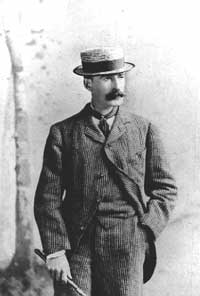
"The sun will not rise or set without my notice,
and thanks."
Winslow Homer, 1895
Perhaps it was this notice of and gratitude for the beauty of the cycles of nature that helped make Winslow Homer one of America's most treasured artists. The United States has produced its own breed of painters true to the vision and character of the nation. In the nineteenth century, one of its greatest was Winslow Homer. Classified as an American naturalist painter, Winslow was a self-taught artist who became most famous for his views of the American landscape and most notably his seascapes off of the Maine coastline where he lived during the latter part of his life.
Born in Boston, Massachusetts, Homer started an apprenticeship to the Boston commercial lithographer at the age of 19. By 1857 he had started an independent career, employed as a free-lance illustrator for such magazines as Ballou's Pictorial and Harper's Weekly. In 1859 he opened his own studio in New York City, where began his career as a painter.
Harper's sent Homer to the front during the American Civil War, where he did sketches of battle scenes and mundane camp life. Although these did not gain him much note at the time, they were to influence much of his later work. Back at his studio after the war, Homer set to work on several war-related paintings, among them Sharpshooter on Picket Duty and Prisoners from the Front.
After exhibiting at the National Academy of Design, Homer traveled to France in 1867 and began practicing painting landscapes while continuing to work for Harper's. He began to paint in watercolor, and in 1875 he ended his career as a commercial illustrator, concentrating on his painting.
Winslow Homer began to gain acclaim as a painter in the late 1870s and early 1880s. His 1872 composition, Snap the Whip, was shown at the 1876 Centennial Exposition in Philadelphia, Pennsylvania.
He traveled widely and spent two years (1882-83) in England, where his boyhood interest in the sea was rekindled. He moved to Prout's Neck, Maine (near Scarboro) and began painting seascapes, for which he is perhaps best known. Notable among these are Banks Fisherman, Eight Bells, Gulf Stream, Rum Cay, Mending the Nets, and Searchlight, harbor Entrance, Santiago de Cuba. In order to find locations for his seascapes, Winslow Homer often took trips to such locations as Florida and the Caribbean.
Homer died at the age of 74 in his Prout's Neck studio. His painting, Shoot the Rapids, remained unfinished. Homer's works, already in great demand during his lifetime, are widely sought today.
Winslow Homer did in showing the beauty of America what many French Impressionists did for Europe, and his body of work will shine as a legacy to our great and beautiful nation.
Winslow Homer's illustrations of the Civil War have become the most collected artistic material of this era. Homer's Sharpshooter is the singular most sought after illustration of the period, and continues to be highly prized by collectors and serious students of the Civil war.
